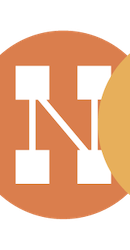Tech Field Day Coverage
Our delegate panel includes independent writers and thought leaders, and we collect their coverage of the event, Tech Field Day presentations, and sponsoring companies here.
Voices in Data Storage – Episode 36: A Conversation With Anand Babu Periasamy and Jonathon Symonds on MinIO
On a recent Voices in Data Storage podcast episode, host Enrico Signoretti interviewed the CEO and co-founder of MinIO, AB Periasamy, as well as their CMO Jonathan Symonds. Enrico recently got to hear in-depth on their technology and solutions at Storage Field Day. In the interview they discuss how MinIO’s high-performance, software-defined, distributed object storage server and client fit into the overall storage market, as well as AB Periasamy’s history with open-source software.
Read More:
Google Cloud VMware Engine – Hot Take
The former CloudSimple team presented at Tech Field Day 21 on the recently rebranded Google Cloud VMware Engine (GVE). What is it? How is it different than VMware Cloud on AWS? What are the advantages and disadvantages? Keith Townsend got to learn all about it during our recent virtual Tech Field Day event. While not going into competitive solutions specifically, they did outline how GVE differentiates in the landscape. This takes the VMware Cloud Foundation based, which allows any cloud provider to take any VMware components to offer a managed VCS service. Google of course offers their considerable scale on top of this. Keith breaks down how this compares to the other major public clouds.
Read More:
Google Cloud VMware Engine - Hot Take
Itential – The Network Glue You Need
How can you ensure your automation project doesn’t fall apart when you need to interface with APIs? Have you considered using the right glue to tie it all together? Tom Hollingsworth looks back at Itential’s presentation from Networking Field Day and how they are the glue you need to make automation happen. The company was founded to manage all the automation issues facing organizations today, by creating a standard interface to deal with the surfeit of API languages out there. Their Itential Automation Platform works with third-parties to build connectors that interface with the applications and devices on your network.
Read More:
Itential - The Network Glue You Need
How We Overcame the Challenges and Developed a Fully Distributed Network Operating System
This post from DriveNets’ Amir Krayden builds upon a previous post, where they looked at the challenges of developing their own fully distributed network operating system from scratch. This touches on a lot of what Amir discussed during the company’s recent presentation at Networking Field Day. By building a networking OS that is built for scale, service growth and orchestration, they’re able to base router architecture the the web scale native to the cloud. This piece digs into how the company solved the not inconsiderable challenges they faced.
Read More:
How We Overcame the Challenges and Developed a Fully Distributed Network Operating System
Dell EMC Isilon Is an Emmy Winner!
It’s not uncommon for presenters at Field Day events to win awards within the industry. We’re proud that our events feature the most influential and innovative companies in IT, so it’s not surprising to see that recognized. But it’s not often that we see one win an Emmy! That’s what Dell EMC’s Isilon did, winning a Technology & Engineering Emmy Award for early development of hierarchical storage management systems. Chin-Fah Heoh has been familiar with Isilon’s OneFS for a long time. He has respect for the platform for offering a real true clustered, scale-out file system that has proved it’s value over its life. He details the history of the platform, and how the company showed at Storage Field Day how they’re supporting running OneFS in the cloud.
Read More:
Dell EMC Isilon is an Emmy winner!
Tech Field Day
It’s always great to have an iconic company like VMware present at Tech Field Day. With a diverse array of solutions that have important places throughout the data center, it’s important for the Field Day community to keep up to date on the latest, and communicate directly with their team. At their recent Tech Field Day presentation, VMware did deep dives on VMware Cloud Foundation 4, vRealize Network Insight, Kubernetes integration of VMware NSX, and more. Be sure to check out their full presentation video for all the latest.
Read More:
vSphere Kubernetes Hot Take
Keith Townsend got to hear from VMware at Tech Field Day, where they packed a lot of information into a four hour session. Part of the presentation that surprised him was the Kubernetes integration into vSphere. This didn’t take the approach that Keith had thought when it was originally announced. Instead it comes as an extension of VMware Cloud Foundation, providing the ability to run a SDDC reference design across any environment. His biggest question with this is using VSAN as the management platform for Kubernetes. It’s an intriguing breakdown of the presentation, and Keith can’t wait to get some more focused deep dive sessions from VMware soon.
Read More:
Aruba Bridges 5G and Wi-Fi 6 With New Air Pass Feature
Aruba recently announced a new offering called Air Pass, which Drew Conry-Murray looks at in this post. Air Pass bridges 5G cellular networks with in-building WLANs to enable seamless hand-off between 5G and Wi-Fi 6 networks. This effectively allows carriers and enterprises to build seamless handoffs from cellular to WLAN for voice and data on devices. A key technical compontent of this handoff is Passpoint, a Wi-Fi Alliance developed standard to provide automatic authentication between the carrier and WLAN. Be sure to check out Aruba’s presentation from Mobility Field Day last year, where they dug into the specifics of Passpoint and how it operates in their devices and software.
Read More:
Aruba Bridges 5G And Wi-Fi 6 With New Air Pass Feature
Building a Software Defined Cloud Network With CloudGenix
In this case, Phil Gervasi makes the case that while a lot of SD-WAN conversations still position the solution as an emerging technology, that’s no longer the case. He argues that with clear uses cases having emerged, it is now a maturing technology, and that the differentiator for a lot of providers comes down to cloud connectivity. SD-WAN is less about cost saving and load balancing, and more about connecting to cloud resources and SaaaS apps easier, more secure, and with a better user experience. At Networking Field Day, he heard from CloudGenix, which offers an SD-WAN solution that’s almost completely cloud focused, based on software running on commodity equipment. Rather than an appliance-in-a-box approach, they do this to offer a SD-WAN fabric with hooks into a wide array of cloud-based SaaS and IaaS solutions.
Read More:
Building a Software Defined Cloud Network with CloudGenix
NetApp Fabric Orchestrator and Hybrid Cloud
NetApp discussing its Data Fabric strategy for a few years now. In this post, Chris Evans looks at one of the key components of it, Fabric Orchestrator. He sees it as a natural evolution from their Cloud Orchestrator, and reflects a lot of the IP the company acquired with Greenqloud and StackPointCloud. Fabric Orchestrator introduces workflow to manage how to apply policies to data sets, independent of how they are attached to applications. This allows for data to be tiered to either less expensive on-premises storage or into the cloud. Chris thinks NetApp is developing an approach to data mobility in a way that aligns with their existing market, evolving their products as their business needs change.
Read More:
NetApp Fabric Orchestrator and Hybrid Cloud
StorageGRID Gets Gritty
Object storage has a reputation for being “cheap and deep”, offering scalable, affordable storage without much in the way of performance considerations. At Storage Field Day, Chin-Fah Heoh liked that NetApp challenged that narrative with their StorageGRID Webscale (SGWS) solution. With all-flash solutions available, SGWS is not a new platform, but offers new performance capabilities with a very mature software backend. While Chin-Fah wonder what might have been if NetApp had pivoted the platform to performance a little earlier, he sees the company properly positioning the solution for the general purpose object storage market.
Read More:
Day Two Cloud 038: Making the Case for Third-Party Cloud Storage
Tech Field Day founder Stephen Foskett was recently a guest on the Day Two Cloud podcast. On the episode, he and Ned Bellavance discuss third-party cloud storage, and how it fits into a market with so many native options readily available. In the episode they discuss common enterprise use cases, and examines key issues including performance, data management, and operations.
Read More:
Day Two Cloud 038: Making The Case For Third-Party Cloud Storage
Voices in Data Storage – Episode 35: A Conversation With Krishna Subramanian of Komprise
On a recent episode of Voices in Data Storage, Enrico Signoretti spoke with Komprise’s co-founder and COO Krishna Subramanian. Krishna has a extensive history working in IT, from being VP Marketing for Cloud Platforms at Citrix, to leading cloud computing strategy at Sun, and co-founding Kovair. Enrico was recently a delegate at Storage Field Day, where Komprise made a return as a presenter. Be sure to check out their full video to get up to date on their latest solutions.
Read More:
Voices in Data Storage – Episode 35: A Conversation with Krishna Subramanian of Komprise
SFD19: DellEMC Does DevOps
Dell EMC was one of the presenters at a busy Storage Field Day event. In this post, Becky Elliott writes up her thoughts on the presentation, one that was dominated by Dell EMC’s approach to DevOps. The company hit on the increasing imperative of automation in the enterprise and how IT silos are breaking down. Dell EMC also discussed their Ansible Playbooks for platforms like Isilon and PowerMax to help unify configuration, deployment, and orchestration. For Becky, this kind of practical focus of the presentation proved to be the most valuable.
Read More:
Autonomous SD-WAN by CloudGenix- My Analysis
Faisal Khan attended his first Networking Field Day event in four years, and got up to date with CloudGenix’s autonomous SD-WAN solution. There’s no dearth of companies competing in the SD-WAN market, so Faisal was curious how they would differentiate. What caught his eye was their application-centric paradigm using a single edge appliance. This offers real-time analytics without the need for cloud-based controllers or a cloud analytics engine. Overall Faisal sees CloudGenix appealing to service providers or customers needing an efficient solution on the edge.
Read More:
Autonomous SD-WAN by CloudGenix- My Analysis
Can Infrascale Compete in the Enterprise Backup Market?
Chris Evans is no stranger to the storage industry, so it’s always exciting to talk to a new company. At Storage Field Day, he got to hear from Infrascale, a company that has over two decades of experience in endpoint and enterprise data protection, but one that Chris hadn’t spoken to before. They offer solutions for cloud backup, SaaS protection, and disaster recovery, the last of which was demoed at the event. Chris was impressed that without a lot of flashing funding rounds, Infrascale offers a remarkable mature feature set. But with the shift in data protection models from applications to data, companies like Infrascale need to keep evolving to stay relevant with the times.
Read More:
Can Infrascale Compete in the Enterprise Backup Market?
IoT Calls for Security!
During Tech Field Day Extra at Cisco Live Europe 2020, David Penaloza Seijas heard a session with Tim Szigeti and the Cisco IoT folks, showing their Innovations in Cyber Security and Edge Data, addressing the concerns of the operational technology and enterprise spaces. IoT offers a lot of opportunity to enterprises, and usually offer a fairly low floor of investment to get started. But as David points out in this piece, the true costs and challenges of IoT from a security standpoint are often unknown until they are out in the wild. During their presentation, Cisco showed how they can offer security, isolation, endpoint analysis, and network readiness in a single platform.
Read More:
Paradigm Shift of Dev to Storage Ops
Chin-Fah Heoh considers how the advent of containers and Kubernetes have moved storage and DevOps closer than ever. In his mind, the Container Storage Interface commonly used in the industry cannot scale nearly as well in the cloud like object storage, which is clearly where container storage needs to go in the future. At Storage Field Day, he heard how MinIO is looking to bridge the divide between Dev and Ops with their Kubernetes friendly high performance object storage platform. He then looks at how VMware is adapting to the times with Project Pacific, which includes Cloud Native Storage and has chosen MinIO as the resident object storage provider. It’s a key integration for a high performance scalable storage solution.
Read More:
Paradigm shift of Dev to Storage Ops
Mist a Refreshing Experience When You Need a Support Case
Haydn Andrews got his hands on a Mist AP43 during Mobility Field Day last summer, and just found time to run it through its wireless paces. In his initial testing, Haydn found the setup process to be incredibly easy. When he did run into some issues and questions while trying to do some advanced configuration, he was even more impressed by the support system at Mist Systems. Instead of having to send all sorts of log and license information over to the support team, they got him answers to his questions within a few minutes. It was a refreshing change of pace for what is considered standard in much of the industry.
Read More:
Mist a refreshing experience when you need a support case
Storage Field Day 19 MinIO
One of the companies that really stood out to Joey D’Antoni at Storage Field Day was MinIO. If you’re still getting up to speed on the modern world of object storage, Joey does a good job of quickly summarizing what differentiates it from traditional block storage. Object storage is all about solving the problems of scale. For Joey, MinIO’s open source storage management software excels in that regard, offering extremely fast performance with full S3 compatibility. He lays out some potential use cases, and really wants to see where MinIO takes the solution from here.
Read More:







